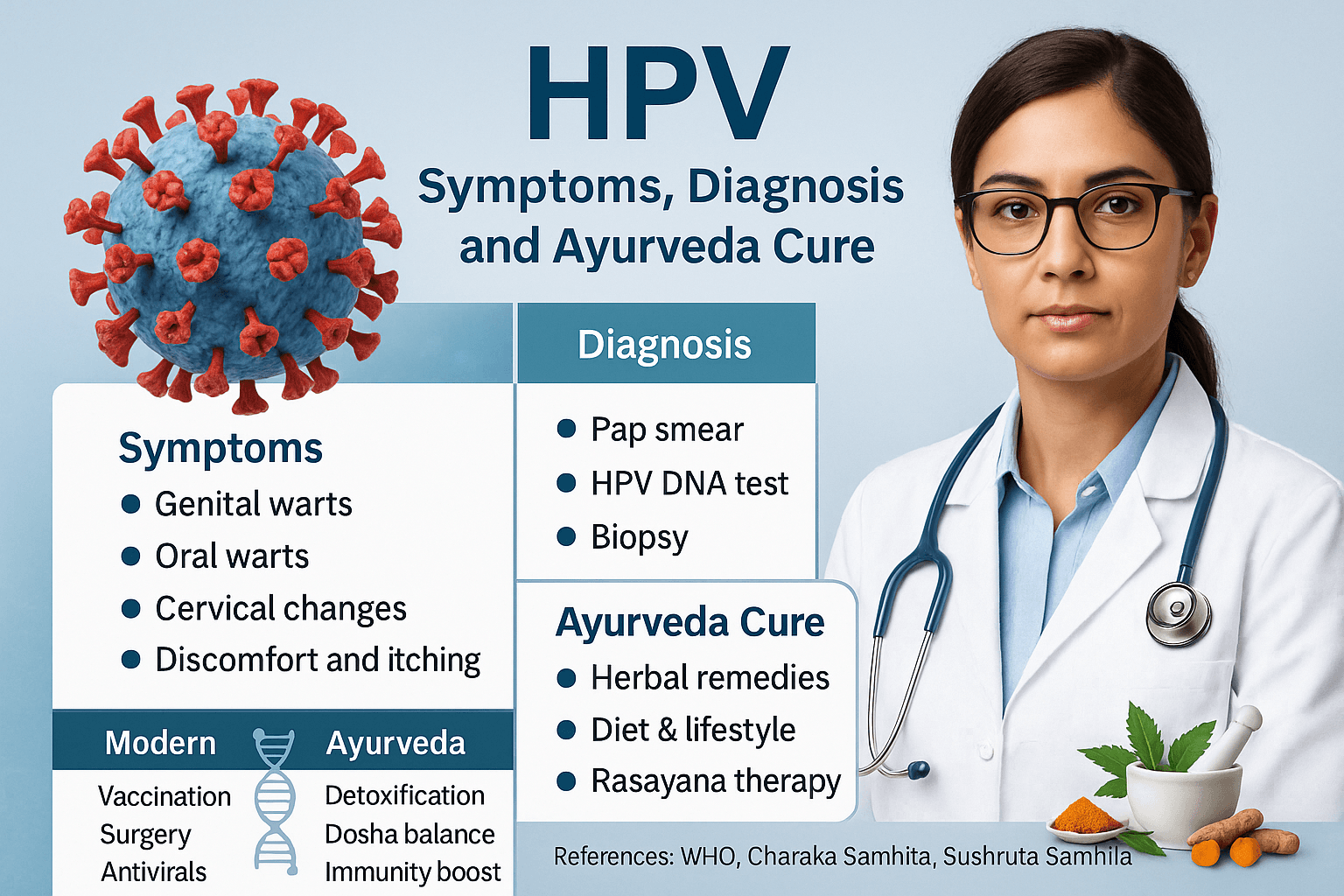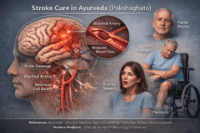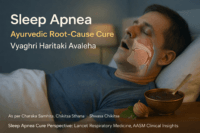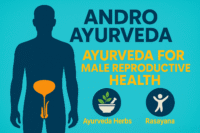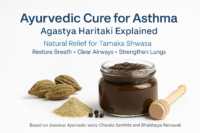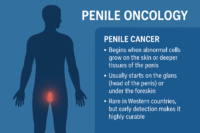- What is HPV?
- Global Prevalence and Risks
- Limitations of Modern Prevention
- The Ayurvedic Perspective
- How Ayurveda Approaches HPV
- Symptoms of HPV
- Common Symptoms
- Rare Symptoms
- Overlooked or Special Situations
- Diagnosis of HPV
- Ayurvedic Cure for HPV
- Bhallataka Rasayana Avaleha(Jam Based Medicine)-As per Ayurveda texts
- How to Take It
- References
What is HPV?
Human Papillomavirus (HPV) is a group of more than 200 related viruses. Around 40 of these strains infect the genital tract, mouth, and throat. According to the World Health Organization, over 80% of sexually active men and women will contract HPV at some point in their lives [1].
Most HPV infections do not cause symptoms and are cleared naturally within one to two years. However, some strains can persist in the body and lead to serious health issues.
Global Prevalence and Risks
HPV is the most common viral sexually transmitted infection (STI) worldwide. High-risk HPV types, particularly HPV-16 and HPV-18, are responsible for nearly 70% of cervical cancer cases across the globe [2]. Cervical cancer is currently the fourth most common cancer in women, with over 600,000 new cases and 340,000 deaths annually [3].
Low-risk strains, like HPV-6 and HPV-11, do not cause cancer but are responsible for about 90% of genital warts [4]. HPV is also linked to other cancers, including anal, penile, vulvar, vaginal, and oropharyngeal cancers, affecting both men and women [5].
Limitations of Modern Prevention
Vaccines such as Gardasil and Cervarix are highly effective in preventing infection with certain high-risk HPV strains. Still, they have some limitations:
- They do not protect against all HPV types.
- They work best when given before sexual activity begins.
- They do not treat existing infections.
- Accessibility remains limited in low- and middle-income countries, where the highest burden of cervical cancer occurs [6].
The Ayurvedic Perspective
Ayurveda interprets HPV through three core concepts:
- Krimi (microorganisms) – representing the viral invasion.
- Dushta Rakta (impure blood) – indicating a disturbed internal environment.
- Doshic imbalance (Pitta and Kapha aggravation) – making the body more vulnerable.
From an Ayurvedic lens, persistent HPV infection develops when Ojas (vital immunity) is weakened due to factors like poor diet, stress, and unhealthy lifestyle choices.
How Ayurveda Approaches HPV
Ayurveda doesn’t just focus on removing warts or suppressing abnormal cells. Instead, it aims at restoring complete balance:
- Shodhana (Detoxification): Therapies like Virechana (purgation) and Raktamokshana (bloodletting) help cleanse toxins.
- Shamana (Pacification): Herbs and mineral preparations balance disturbed doshas and strengthen Rakta Dhatu (blood tissue).
- Rasayana (Rejuvenation): Immune-boosting formulations such as Guduchi, Neem, Ashwagandha, and Swarna Bhasma restore Ojas and prevent recurrence.
This holistic framework highlights Ayurveda’s root-cause approach. Rather than just suppressing symptoms, it works to strengthen the immune system, balance internal energies, and prevent long-term risks like precancerous changes or cancer development [7].
Symptoms of HPV

Human Papillomavirus (HPV) is often called a “silent infection” because the majority of cases do not produce noticeable symptoms. In most healthy individuals, the immune system clears the virus within one to two years [1]. However, when HPV persists or involves high-risk strains, symptoms can appear in diverse ways — ranging from benign warts to precancerous lesions and cancers.
Common Symptoms
Genital Warts
- Caused mainly by HPV-6 and HPV-11.
- Appear as soft bumps or clusters around the vulva, vagina, cervix, penis, scrotum, or anus.
- Can be raised, flat, or cauliflower-like in shape.
- May cause itching or mild irritation [2].
Oral and Throat Lesions
- HPV can infect the oral cavity, tonsils, and throat.
- Symptoms include warts inside the mouth, persistent sore throat, or hoarseness.
- In some cases, oral HPV can progress to oropharyngeal cancers [3].
Cervical Cell Changes
- High-risk HPV types (especially 16 and 18) cause silent alterations in cervical cells.
- These changes are typically detected only by Pap smears or HPV DNA tests.
- If untreated, they may progress to cervical intraepithelial neoplasia (CIN) or cervical cancer [4].
Cancer Risks
Persistent infection with oncogenic HPV is a major cause of:
- Cervical cancer (responsible for 70% of cases)
- Anal cancer
- Penile cancer
- Vulvar and vaginal cancers
- Oropharyngeal cancers [5]
Rare Symptoms
Recurrent Respiratory Papillomatosis (RRP)
- Benign but potentially dangerous wart growths in the larynx or trachea.
- Causes hoarseness, chronic cough, and sometimes life-threatening airway obstruction [6].
Conjunctival Papillomas
- Noncancerous growths on the eye surface.
- Can cause eye irritation, redness, or blurred vision [7].
HPV-Related Nail Lesions
- Warts around or under fingernails and toenails (periungual or subungual).
- Sometimes misdiagnosed as fungal infection or melanoma [8].
Persistent Ulcers and Painful Lesions
- Some individuals develop chronic ulcers in the genital or oral regions.
- These are slow-healing and may mimic precancerous or cancerous lesions [9].
Systemic Symptoms in Immunocompromised Patients
- In HIV-positive individuals or those with suppressed immunity, HPV may cause widespread, aggressive wart growths.
- Higher likelihood of malignant transformation [10].
Overlooked or Special Situations
Pregnancy-Related Changes
- Genital warts may enlarge rapidly due to hormonal shifts and increased blood flow.
- In rare cases, large warts may obstruct the birth canal.
- Transmission during childbirth can cause juvenile-onset recurrent respiratory papillomatosis (JORRP) in newborns [11].
Impact on Fertility
- While HPV itself does not directly cause infertility, it may reduce sperm quality in men or cause cervical narrowing after treatment in women.
- These indirect effects can hinder conception [12].
Non-Genital Skin Warts
- Certain HPV strains (types 1, 2, 4) cause common warts on hands, feet, and other skin areas.
- Plantar warts can be painful, especially in athletes or barefoot workers [13].
Subclinical Infections
- Many HPV infections remain invisible.
- Special tests like acetic acid application during colposcopy reveal faint white lesions (acetowhite epithelium) [14].
Psychological Impact
- Diagnosis of HPV or genital warts often triggers anxiety, shame, or depression.
- Psychosocial symptoms are clinically significant but frequently overlooked [15].
Diagnosis of HPV
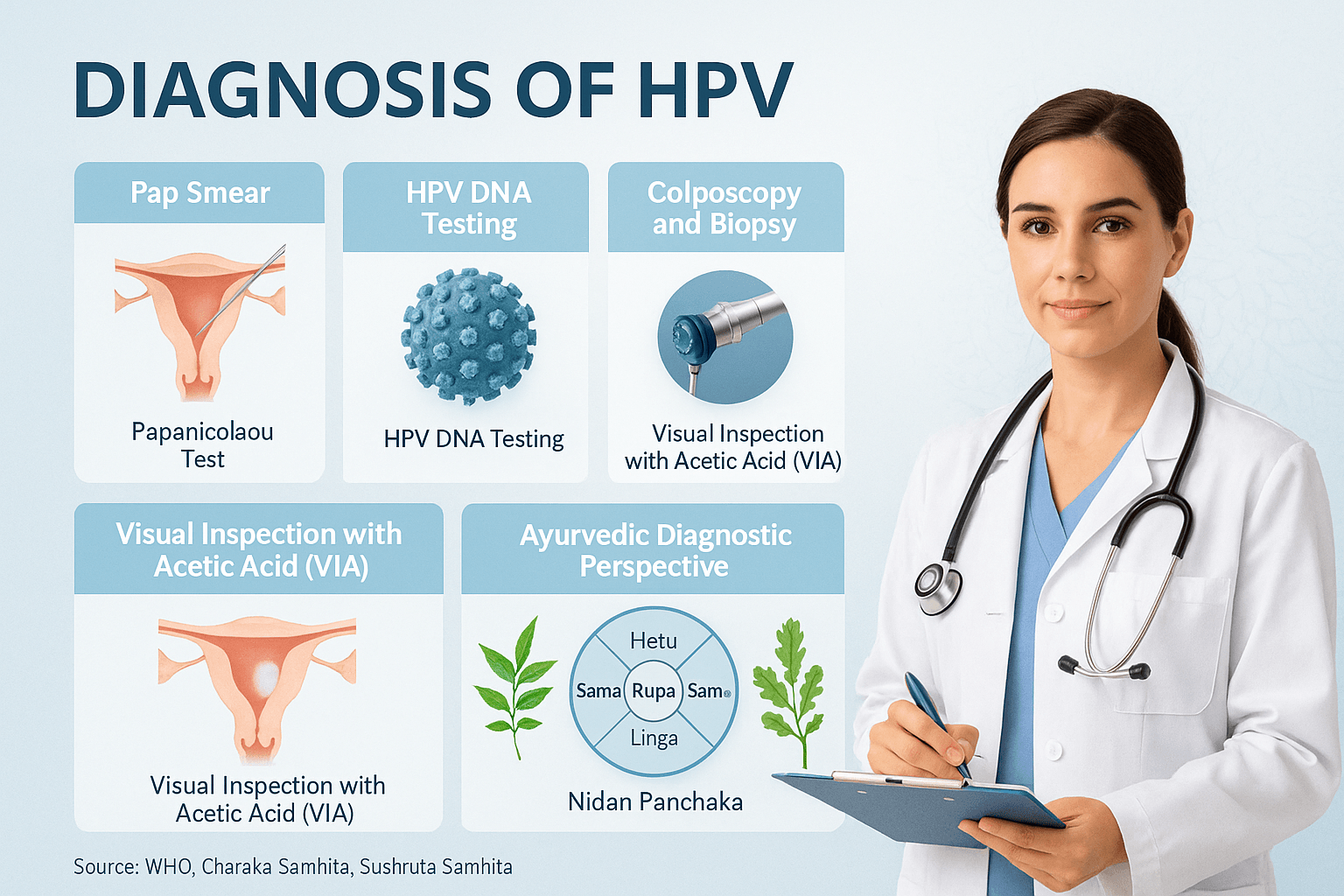
HPV is often symptomless, making diagnostic testing essential for early detection and prevention of complications such as cervical cancer. Diagnosis methods combine modern medical screening with supportive Ayurvedic diagnostic approaches.
Pap Smear (Papanicolaou Test)
- The Pap smear is the most common test for detecting cervical abnormalities caused by HPV.
- It involves collecting cervical cells and examining them under a microscope.
- Detects precancerous changes known as cervical intraepithelial neoplasia (CIN) before they develop into cancer [1].
HPV DNA Testing
- Modern HPV DNA tests detect the genetic material of high-risk HPV types such as HPV-16 and HPV-18.
- Can be performed alongside Pap smear (co-testing).
- Provides higher sensitivity in identifying women at risk for cervical cancer [2].
Colposcopy and Biopsy
- If abnormal cells are detected, a colposcopy is performed using a magnifying device to examine the cervix closely.
- A biopsy may be taken from suspicious areas for histopathological confirmation [3].
Visual Inspection with Acetic Acid (VIA)
- A low-cost alternative widely used in resource-limited settings.
- The cervix is swabbed with 3–5% acetic acid; HPV-infected areas turn white (acetowhite lesions).
- Offers immediate results but requires trained personnel [4].
Anal, Oral, and Penile HPV Testing
- Anal Pap tests may be used for high-risk groups, such as men who have sex with men (MSM) and HIV-positive individuals.
- Oral HPV testing and penile swabs can detect viral presence in non-cervical sites, though these are less routinely used [5].
Subclinical Infections
- Many HPV cases remain subclinical (invisible).
- Detection relies on DNA-based tests, colposcopy, or immunohistochemistry, as physical symptoms may not appear [6].
Ayurvedic Diagnostic Perspective (Nidan Panchaka)
Ayurveda approaches HPV diagnosis through Nidan Panchaka (fivefold diagnostic method):
- Hetu (causes): Unprotected sex, low immunity, improper lifestyle.
- Linga (symptoms): Warts, ulcers, Rakta Dushti (impure blood signs).
- Rupa (clinical picture): Localized or systemic spread depending on dosha involvement (Pitta-Kapha predominance).
- Samprapti (pathogenesis): Viral lodgment in Rakta and Shukra Dhatus, leading to Krimi manifestation.
- Upashaya (therapeutic test): Relief through Shodhana (detox), Rasayana (immunity), and Krimighna herbs (antiviral action) confirms diagnosis [7].
When to Get Tested
- Women aged 21–29: Pap smear every 3 years.
- Women aged 30–65: Pap smear + HPV DNA co-test every 5 years.
- High-risk individuals (HIV-positive, multiple partners, immunocompromised) should undergo more frequent screening [8].
Ayurvedic Cure for HPV
Ayurveda explains that chronic viral diseases like HPV (Human Papillomavirus) arise due to Rakta Duṣṭi (impurities in the blood), Krimi (microbial invasion), and imbalance of Pitta and Kapha. Such conditions cause warts (Charmakeela), abnormal growths (Granthi), and long-standing infection. The cure in Ayurveda lies not only in removing symptoms but in eliminating the root disease (Vyadhi-hara), restoring immunity (Ojas), and preventing recurrence.
For this purpose, Ayurveda prescribes special Rasayana Avalehas (herbal confections) that combine deep detoxification, blood purification, and immunity-boosting actions.
Bhallataka Rasayana Avaleha(Jam Based Medicine)-As per Ayurveda texts
- Mentioned in Charaka Samhita (Chikitsa Sthana – Rasayana Adhyaya) and further explained in Bhavaprakasha Nighantu, Bhallataka (Semecarpus anacardium) is described as a potent Rasayana for stubborn diseases like Granthi, Arbuda, Kushta, and Krimi [1,2].
- Its action is Lekhana (scraping), Krimighna (antiviral/antiparasitic), and Rasayana (rejuvenating).
- Classical commentators highlight that when Bhallataka is properly purified (Śodhana), it becomes a strong immunity enhancer and disease-destroyer.
Why This Avaleha for HPV?
- Shrinks warts and growths: Bhallataka’s scraping action helps in clearing Charmakeela (HPV warts).
- Destroys viral persistence: When fortified with Vyadhiharan Rasayan (a mineral Rasayana described in Rasashastra for chronic, incurable diseases), it directly targets hidden viral reservoirs [3].
- Purifies blood and tissues: Herbs like Guduchi, Neem, Triphala, Turmeric, and Bhumyamalaki clean the blood and prevent malignant transformation [4–6].
- Strengthens immunity (Ojas): Swarna Bhasma (Gold), Abhraka Bhasma (Mica), and Yashada Bhasma (Zinc) rebuild cellular immunity and protect mucosal tissue [7].
Key Herbs and Their Role
- Bhallataka (Semecarpus anacardium): Main ingredient; has lekhana (scraping) action to remove warts and krimighna (antiviral) effect. Used in Granthi, Arbuda, Kushta [1].
- Triphala (Amalaki, Haritaki, Bibhitaki): Detoxifies and rejuvenates tissues. Prevents abnormal cell growth, purifies Rakta Dhatu [2].
- Guduchi (Tinospora cordifolia): Enhances disease resistance (Vyadhi-kshamatva). Modern research shows strong immunomodulatory action [3].
- Neem (Azadirachta indica): Powerful blood purifier; induces apoptosis in HPV-infected cervical cells. Traditionally used in Krimi and Kushta [4].
- Turmeric (Curcuma longa): Curcumin suppresses HPV E6/E7 oncogenes, prevents malignant transformation [5].
- Vidanga (Embelia ribes): Krimighna (destroys hidden viral/microbial factors). Helps in cleansing the gut and immune system [6].
- Bhumyamalaki (Phyllanthus niruri): Famous antiviral; inhibits viral replication and supports the liver [7].
- Shatavari (Asparagus racemosus): Rasayana for the reproductive system, balances hormones, and supports cervical tissue healing [8].
- Manjishtha (Rubia cordifolia): Potent Rakta-shodhaka (blood purifier), reduces inflammation and discoloration [9].
- Ashwagandha (Withania somnifera): Adaptogen and Ojas booster; reduces stress-induced immune suppression [10].
Key Minerals and Their Role
- Swarna Bhasma (Gold): Supreme Rasayana; enhances immunity, improves T-cell and macrophage response, prevents recurrence [11].
- Rajata Bhasma (Silver): Cooling and antiviral; soothes inflamed genital and oral mucosa [12].
- Yashada Bhasma (Zinc): Strong antiviral and skin-healing; modern medicine also uses zinc for wart regression [13].
- Tamra Bhasma (Copper): Scraping action on abnormal growths; improves liver function and immunity [14].
- Abhraka Bhasma (Mica): Strengthens all Dhatus (tissues), rejuvenates Majja (bone marrow), prevents recurrence [15].
- Lauh Bhasma (Iron): Corrects Rakta-duṣṭi, builds healthy blood, supports immunity [16].
- Pravala Pishti (Coral): Cooling, anti-Pitta; heals ulcers, reduces burning sensations [17].
- Mukta Shukti (Pearl/Oyster Shell): Balances acid–alkali, calms inflamed tissues, promotes healing [18].
- Godanti Bhasma (Gypsum): Cooling, reduces fever-like inflammatory states, stabilizes Rakta [19].
- Sphatika Bhasma (Alum): Antiviral, antiseptic, and wart-shrinking [20].
- Hiraka Bhasma (Diamond): Rare Rasayana; promotes deep tissue rejuvenation and cellular repair [21].
- Swarna Makshik Bhasma (Chalcopyrite): Improves Pitta–Kapha balance, strengthens digestion and immunity [22].
- Trivanga Bhasma (Lead–Tin–Zinc): Useful for genito-urinary health; improves tissue resistance [23].
- Nag Bhasma (Lead): Cautiously used after purification; effective in Kapha disorders with warts [24].
- Gandhaka Rasayan (Sulphur compound): Antiviral, Rasayana for skin and immunity [25].
- Vyadhiharan Rasayan: Kupipakwa mineral preparation (mercury–sulphur–arsenical base) described for chronic, stubborn, and “incurable” diseases. Strong antiviral and disease-eliminating effect [26].
Preparation (Under-Supervision of Qualified Doctor) Strictly
- Purification: Bhallataka kernels purified in buttermilk/cow’s urine for 7 days [2].
- Decoction: Bhallataka + Triphala decoction prepared.
- Avaleha Base: Decoction cooked with jaggery until jam-like; cooled, then mixed with ghee and honey.
- Fortification: Herbal powders and mineral Bhasmas are added in prescribed micro-doses.
- Final Step: Vyadhiharan Rasayan is added in tiny quantity to complete the fortified Avaleha.
How to Take It
- Dose: ½–1 teaspoon (≈3–6 g) once or twice daily.
- With (Anupāna): Warm milk (Rasayana effect), honey (wart regression), Guduchi decoction (blood purification).
- Course: 3–6 months under supervision.
- Pathya (Diet): Light, sattvic food; avoid spicy, sour, fermented foods; include amla, turmeric, leafy vegetables.
- Can Ayurveda really cure HPV?
Yes. Ayurveda aims for complete cure rather than symptom control. Bhallataka Rasayana Avaleha helps by purifying the blood, boosting immunity, and removing the virus from its root. - What is Bhallataka Rasayana Avaleha?
It is a classical Ayurvedic herbal jam prepared from purified Bhallataka, Triphala, ghee, honey, and jaggery. When fortified with Vyadhiharan Rasayan and mineral Bhasmas, it becomes a powerful medicine for HPV. - How does this Avaleha work against HPV?
- Removes warts with Bhallataka’s scraping action
- Destroys hidden virus through Vyadhiharan Rasayan
- Purifies blood with Guduchi, Neem, and Triphala
- Boosts immunity with Swarna Bhasma and Abhraka Bhasma
- Prevents recurrence as a Vyadhi-hara Rasayana
- Is Bhallataka Rasayana Avaleha safe?
Yes, when prescribed by an Ayurvedic doctor. Bhallataka is purified before use and minerals are processed safely. Raw Bhallataka should never be taken without proper purification. - How long does it take to see results?
Most patients see improvement within three to six months of regular use. Chronic or severe HPV cases may need a longer course. - Can this Avaleha prevent cervical cancer caused by HPV?
Yes. Turmeric and Neem have been shown to suppress HPV-related changes, while Rasayana therapy protects tissues from precancerous or cancerous transformation. - What diet should I follow during treatment?
Avoid spicy, sour, and fermented foods. Favor fresh vegetables, green leafy vegetables, Amla, and turmeric. Good sexual hygiene is important to prevent reinfection. - Can men also use Bhallataka Rasayana Avaleha?
Yes. The formulation works for both men and women with HPV, whether it affects the genital, anal, or throat region. - Can this medicine be taken with HPV vaccines or modern treatments?
Yes. It can be combined with vaccination or medical procedures. Ayurveda complements modern approaches by strengthening immunity and preventing recurrence. - Who should avoid this Avaleha?
Pregnant women, those with ulcers or strong Pitta imbalance, people allergic to the cashew family (Anacardiaceae), and anyone using it without medical supervision.
References
- Charaka Samhita. (2024). Rasayana chapter – Ayurvedic rejuvenation therapy.
https://www.carakasamhitaonline.com/index.php/Rasayana_Adhyaya - Charaka Samhita. (2024). Chikitsa Sthana (treatment section).
https://www.carakasamhitaonline.com/index.php/Chikitsa_Sthana - Ministry of AYUSH. (2006). The Ayurvedic Pharmacopoeia of India, Part-I, Vol. 2 – Bhallataka monograph.
https://www.ayurveda.hu/api/API-Vol-2.pdf - Ministry of AYUSH. (2016). The Ayurvedic Pharmacopoeia of India, Part-I, Vol. 6 – monographs.
https://dravyagunatvpm.files.wordpress.com/2019/10/api-part-1-vol-6-monographs.pdf - Savrikar, S. S., & Ravishankar, B. (2010). Bhaishajya Kalpanaa – The Ayurvedic pharmaceutics (Avaleha concept). Ayu, 31(1), 74–80.
https://pmc.ncbi.nlm.nih.gov/articles/PMC3025621/ - Sharma, S. (Ed.). (1982). Rasatarangini – Classical Rasashastra text (24th Taranga: purification).
https://www.ijooar.com/PDFUpload/V7_I2_A128.pdf - Ayurpharm Review. (2014). Rasatarangini overview (Shodhana methods).
https://www.ayurpharm.com/imagesuser/ayurpharm351.pdf - Sharma, M. B., Zala, U. V., & Paneliya, A. M. (2023). Purification of Bhallataka: A pharmaceutical study. IJISRT, 8(3).
https://ijisrt.com/assets/upload/files/IJISRT23MAR2012.pdf - Deshpande, P. R. (2016). Vyadhiharana Rasayan: Kupipakwa formulation, dose and clinical use. AyurPub, 1(3), 108–113.
https://ayurpub.com/wp-content/uploads/2016/08/vyadiharana-rasa.-prakash.pdf - IAMJ Resource. (n.d.). Kupipakwa Rasayana overview (including Vyadhiharana Rasa).
https://iamj.in/RASASHASTRA_BHAISHAJYA/images/upload/kupi_pakwa_Rasayana.pdf - Joglekar, A. A., et al. (2024). Ayurvedic health-care approaches in cancer management. International Journal of Ayurveda Research.
https://journals.lww.com/ijar/fulltext/2024/05030/ayurvedic_health_care_arenas_in_the_management_of.5.aspx - Kantak, S., et al. (2023). Abhraka (mica) bhasma shows nano features. Journal of Ayurveda and Integrative Medicine.
https://pmc.ncbi.nlm.nih.gov/articles/PMC7527821/ - Chaudhari, S. Y., et al. (2016). Safety of Tamra Bhasma in acute and sub-chronic use. Journal of Ayurveda and Integrative Medicine, 7(1), 23–29.
https://pmc.ncbi.nlm.nih.gov/articles/PMC4910297/ - Chaudhari, S. Y., et al. (2013). Review of research on Tamra Bhasma. AYU, 34(3), 290–293.
https://pmc.ncbi.nlm.nih.gov/articles/PMC3764875/ - Saini, S., Sharma, P., Bansal, R., & Kumar, P. (2023). Swarna Bhasma increases T-cell responses in vitro. Frontiers in Immunology, 14, 1138246.
https://pmc.ncbi.nlm.nih.gov/articles/PMC10123016/ - Bhaskaran, J. K., et al. (2021). Immunomodulatory effect of Swarna-prashana in infants. Ancient Science of Life, 40(4), 242–252.
https://pmc.ncbi.nlm.nih.gov/articles/PMC8078605/ - Al-Gurairi, F. T., et al. (2002). Oral zinc sulfate for resistant viral warts: clinical trial. Clinical and Experimental Dermatology, 27(8), 651–654.
https://pubmed.ncbi.nlm.nih.gov/11952542/ - Wang, C.-C., et al. (2025). Oral zinc sulfate reduces wart recurrence: meta-analysis. PLOS ONE, 20(5), e0323051.
https://journals.plos.org/plosone/article?id=10.1371/journal.pone.0323051 - ClinicalTrials.gov. (Ongoing). Zinc sulfate for HPV clearance (NCT03404310).
https://clinicaltrials.gov/study/NCT03404310 - Maher, D. M., et al. (2011). Curcumin suppresses HPV-16 oncogenes and restores tumor suppressor pathways. International Journal of Oncology, 39(1), 111–118.
https://pubmed.ncbi.nlm.nih.gov/21061268/ - Zhao, X., et al. (2024). Curcumin directly targets HPV E6 in cervical cells. Phytotherapy Research, 38(10), 4967–4981.
https://pubmed.ncbi.nlm.nih.gov/37157900/ - Kumar, S., et al. (2022). Neem bark extract induces apoptosis in cervical cancer cells. BMC Complementary Medicine and Therapies, 22, 239.
https://bmccomplementmedtherapies.biomedcentral.com/articles/10.1186/s12906-022-03718-7 - Batra, N., et al. (2022). Neem in oncology: review of therapeutic potential. Integrative Cancer Therapies, 21, 1–17.
https://pmc.ncbi.nlm.nih.gov/articles/PMC9358515/ - Yates, C. R., et al. (2022). Immunomodulatory review of Tinospora cordifolia. Planta Medica, 88(17), 1508–1523.
https://pubmed.ncbi.nlm.nih.gov/33480818/ - Singh, J., et al. (2024). Giloy (Tinospora) immunomodulatory properties: scoping review. Journal of Food Science and Technology.
https://pmc.ncbi.nlm.nih.gov/articles/PMC11699423/ - Lee, N. Y., et al. (2016). Pharmacological potential of Phyllanthus niruri. Genetics and Molecular Research, 15(2).
https://europepmc.org/article/med/27283048 - Venkateswaran, P. S., et al. (1987). Phyllanthus niruri inhibits hepatitis B virus polymerase. The Lancet, 330(8553), 764–766.
https://europepmc.org/article/pmc/pmc304186 - Tan, W.-C., et al. (2013). Antiviral activity of Phyllanthus species. Evidence-Based Complementary and Alternative Medicine, 2013.
https://pmc.ncbi.nlm.nih.gov/articles/PMC3856372/ - Namburi, U. R. S., & Sreelatha, T. K. (2011). Ayurvedic management of warts (Charmakeela): review. Ayu, 32(3), 372–375.
https://journals.lww.com/aayu/fulltext/2011/32010/a_review_on_management_of_warts_in_ayurveda.19.aspx - JAIMS Review Board. (2020). Comprehensive review of Bhallataka in Ayurveda. Journal of Ayurveda and Integrated Medical Sciences.
https://jaims.in/jaims/article/download/847/864/ - Easy Ayurveda. (2015). Charaka Chikitsa 1.1 – Abhaya-Amalakiya Rasayana (chapter guide).
https://www.easyayurveda.com/2015/07/02/charaka-chikitsa-1-1-abhaya-amalakeeya-rasayana/ - Easy Ayurveda. (2024). Charaka Samhita – All chapter reference links.
https://www.easyayurveda.com/2024/04/25/charaka-samhita-all-chapters-reference-links/ - Kantak, S., et al. (2020). Abhraka bhasma characterization: PubMed record. Journal of Ayurveda and Integrative Medicine.
https://pubmed.ncbi.nlm.nih.gov/30826258/ - Rathi, B., et al. (2023). Pravala Bhasma formulations in Bhaishajya Ratnavali. Journal of Integrative Standard Medicine, 11(2).
https://journals.lww.com/jism/fulltext/2023/11020/pravala_bhasma_formulations_in_bhaishajya.4.aspx - Khanorkar, T. V., et al. (2022). Avaleha preparation methods – literature review. Ayuscript, 1(3).
https://ayuscript.com/submission/ad_54433.pdf



